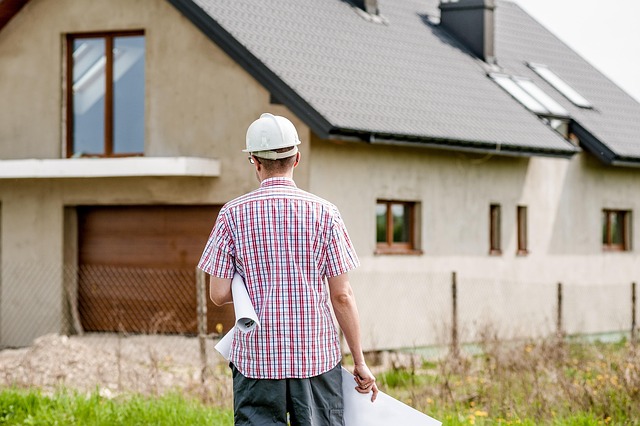Eco-Safe Pest Control: Effective, Environment-Friendly Tips
Protect your home and the environment with eco-friendly pest control strategies. This guide explains green methods like IPM, natural predators, plant-based repellents, and biological pesticides, and shows how to choose licensed contractors, ensure safety, and prevent future infestations. Learn practical, low-toxicity solutions for healthier indoor air and long-lasting pest management.

Introduction: Pest management is essential for a healthy, comfortable living or working space. Traditional approaches often rely on potent chemical agents that can harm people, pets, and ecosystems. Growing awareness of these risks has led many homeowners and businesses to seek eco-friendly pest control options that balance safety with effectiveness.
Common Eco-Friendly Pest Control Methods: - Integrated Pest Management (IPM): A comprehensive strategy that emphasizes prevention, regular monitoring, and targeted, minimal-impact treatments only when necessary. IPM focuses on understanding pest biology and using the least toxic interventions possible. - Natural predators: Introducing or encouraging beneficial species, such as predatory insects or birds, to reduce pest populations naturally without chemical controls. - Plant-based repellents: Using essential oils and botanical extracts to deter pests. These plant-derived formulas can be effective for specific problems and tend to break down faster in the environment than synthetic pesticides. - Physical barriers and traps: Blocking pest entry by installing screens, sealing gaps, and deploying mechanical traps. These approaches prevent infestations without introducing toxins. - Biological pesticides: Applying substances derived from naturally occurring organisms—such as bacteria, fungi, or plant compounds—that suppress pests while posing lower risk to non-target species and habitats.
Why Choose Eco-Friendly Pest Control? - Lower health risks: Green methods reduce exposure to hazardous chemicals, protecting residents, pets, and wildlife. - Better for ecosystems: Eco-conscious techniques minimize impacts on beneficial insects, plants, and water systems. - Sustainable results: By addressing underlying causes like shelter and food sources, these practices often deliver longer-lasting control. - Improved indoor air quality: Less reliance on synthetic pesticides leads to cleaner air inside homes and buildings. - Regulatory compliance: Many regions restrict certain pesticides, so eco-friendly options can help you stay within local rules and guidelines.
How to Pick a Licensed Pest Control Contractor: Choosing a qualified, licensed professional is crucial for both safety and efficacy. Consider these steps: - Confirm licensing: Verify the contractor holds the permits and certifications required by your state or municipality. - Ask about green practices: Make sure they have experience with eco-friendly techniques and can explain how they limit environmental impact. - Check references: Request client references and follow up to learn about past performance and customer satisfaction. - Verify insurance: Ensure the contractor carries liability insurance to cover accidents or property damage. - Get written estimates and contracts: Obtain detailed, written proposals that spell out the services, costs, and any guarantees. - Look for ongoing education: Choose companies that stay current with advances in eco-friendly pest control technologies and integrated approaches.
Safety Measures During Pest Control: Safety must be prioritized whether treatments are applied by a professional or by you. Important precautions include: - Clear communication: Notify all occupants about the treatment schedule and any steps they should take beforehand. - Proper preparation: Follow the contractor’s instructions, such as covering food, removing toys, and keeping pets away from treated areas. - Ventilation: Ensure good airflow during and after applications, especially when sprays, foggers, or aerosols are used. - Personal protective equipment (PPE): If applying products yourself, wear gloves, a mask, and eye protection as recommended on product labels. - Safe storage: Keep all pest control products in their original containers and store them securely out of reach of children and animals. - Follow-up care: Adhere to post-treatment guidance to maximize effectiveness and reduce risk to occupants.
Preventing Future Pest Problems: Prevention reduces the need for intensive interventions and supports long-term pest control. Key preventive steps include: - Seal entry points: Inspect and repair cracks, gaps, and openings in walls, doors, windows, and foundation to deny pests access. - Maintain cleanliness: Regular cleaning and correct storage of food items remove attractive food sources for pests. - Reduce moisture: Fix leaks, improve drainage, and eliminate standing water that can draw pests. - Smart landscaping: Trim vegetation away from buildings, remove yard debris, and avoid plantings that foster pest harborage. - Use natural repellents: Plant pest-repellent species or apply botanical deterrents in gardens and around building perimeters. - Regular inspections: Conduct periodic walkthroughs to detect early signs of pest activity and address small issues before they grow.
Conclusion: Adopting eco-friendly pest control combines prevention, safer treatment choices, and skilled professional help to protect health and the environment. By selecting licensed contractors knowledgeable in green methods, following safety practices, and implementing preventive measures, you can control pests effectively while minimizing risks. Often the best outcomes come from a tailored mix of tactics designed to fit your property and needs.






